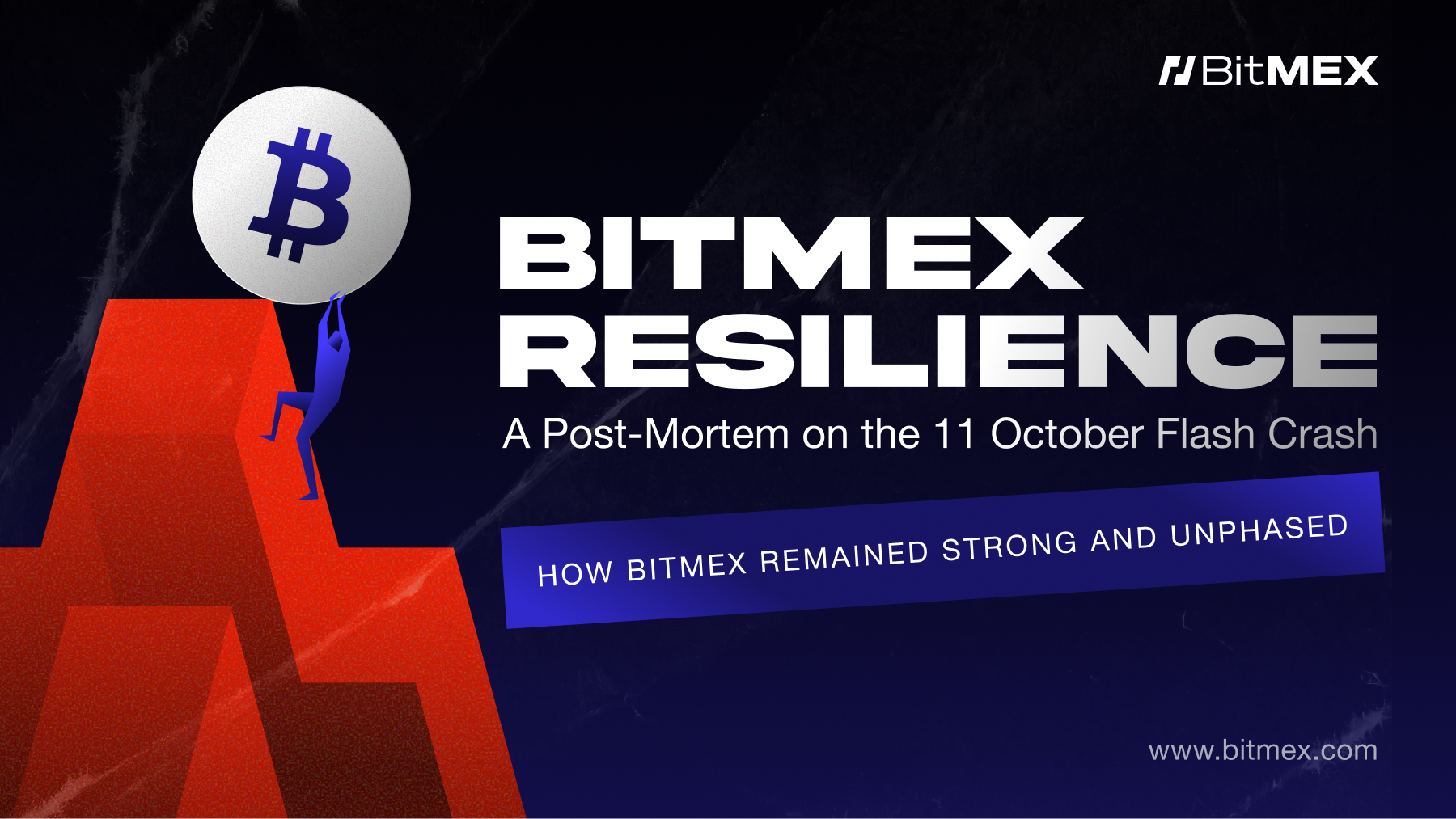 On 11 October 2025, the cryptocurrency market experienced one of the most violent deleveraging events in history. Triggered by geopolitical news and amplified by systemic vulnerabilities on major platforms, the flash crash resulted in a record-breaking $19.35 billion in liquidations, with more than 1.6 million traders affected.
On 11 October 2025, the cryptocurrency market experienced one of the most violent deleveraging events in history. Triggered by geopolitical news and amplified by systemic vulnerabilities on major platforms, the flash crash resulted in a record-breaking $19.35 billion in liquidations, with more than 1.6 million traders affected.
While platforms like Hyperliquid saw a staggering $10.31 billion in liquidations and Binance preparing for what may be its largest-ever compensation package, BitMEX weathered the storm with remarkable stability. Our systems performed exactly as designed, processing the highest trading volume since December 2021 while protecting our users and the platform’s integrity.
This post-mortem provides a breakdown of what exactly happened on 11 October and details the specific risk management and operational systems that ensured BitMEX remained robust during the chaos.
The Market-Wide Cascade: A Failure of Systems, Not Just Prices
The initial catalyst for the crash was external – a post from Donald Trump threatening significant tariffs, which sent a shockwave from traditional markets into crypto. However, the primary driver of the market’s contagion originated from Binance’s major systemic failure, which created a domino effect across the market:
- Flawed Price Oracles & Depegging Spirals: The crash was severely amplified on platforms like Binance, whose systems relied on internal spot market prices for oracle data. This design failed to account for extreme illiquidity, creating a death spiral where assets like wbETH were valued at a fraction of their real worth. This, in turn, led to unjust liquidations based on erroneous data.
- Mass Liquidations & Wiped Wallets: The scale of the damage on other platforms was immense. According to Lookonchain, over 1,000 wallets on the derivatives DEX Hyperliquid were completely wiped out, with total user losses exceeding $1.23 billion. This demonstrates a system that failed to protect its users from catastrophic, cascading risk.
- Acknowledged Failures: Other platforms like the PERP DEX Lighter, openly acknowledged their failures, with its liquidity pool suffering its third-worst daily performance in history as the team promised a compensation plan.
BitMEX Resilience: A System Designed for Extreme Volatility
In stark contrast, BitMEX recorded only $38.50 million in liquidations—a mere 0.2% of the market total. This performance is attributable to a robust, multi-layered risk management philosophy and superior operational stability.
1. Core Trading Infrastructure: Performance Under Load
Operational resilience was demonstrated by the performance of the platform’s core infrastructure under extreme load.
- No System Overloads: A critical component of exchange performance during a crisis is the capacity of its trading engine. While numerous platforms suffered from API overloads and system-wide lag, the BitMEX engine remained fully performant. This stability ensured traders had uninterrupted access to manage their positions throughout the period of highest volatility.
- Continuity of Withdrawals: Operational integrity extended to treasury functions. In contrast to exchanges that were forced to halt withdrawals entirely, BitMEX continued to process user funds. While a small number of transactions experienced minor delays due to network-wide congestion, the continuity of operations underscored the resilience of the platform’s security and treasury systems.
2. Auto-Deleveraging (ADL): The Ultimate Safeguard
The primary directive of our risk engine is to prevent systemic failure. To ensure protection against a single large illiquid position draining the Insurance Fund, the system employs Auto-Deleveraging (ADL), a last-resort mechanism that protects users and the exchange by filling a bankrupt order with the positions of profitable, opposing traders. On the day of the market crash, 15 contracts were auto-deleveraged. This was a deliberate, surgical intervention to protect the Insurance Fund, which absorbed a manageable ~$2 million in losses while ensuring platform solvency.
3. Fair Price Marking: Immunity from Localised De-Pegging
A cornerstone of the platform’s defense is its composite index for Fair Price Marking. BitMEX does not use its own last-traded price for liquidations. Instead, the mark price is derived from a weighted average across 16 major liquid spot exchanges. This methodology prevents localised liquidity crises or flash crashes on a single constituent exchange from triggering unjust liquidations.
4. Human Intervention: A Designed Failsafe
The BitMEX system is built with bug/hack events in mind that require human oversight during unprecedented market moves. During the crash, some mark and index prices were temporarily “stuck”—an intentional safety feature that caps maximum price moves to catch data errors or anomalous wicks. Our team was present throughout the whole event to verify these moves, a human-in-the-loop system that prevents the automated chaos caused by flawed oracles on other exchanges.
Stability by Design: BitMEX
The 11 October flash crash exposed deep architectural flaws in exchange trading systems that clearly prioritise other factors over stability and user protection. As the OG derivatives exchange that has weathered every crypto winter and bull run since 2014, we have always built our platform with the expectation of such black swan events. Our low liquidation numbers, the successful protection of our user’s funds, the 100% uptime throughout the event, and the continued processing of withdrawals are a testament to this philosophy. In moments of market panic, and the robustness of an exchange’s core engineering is what matters most.
Looking for a proven and reliable exchange to trade? Come to BitMEX – we’re currently offering up to $5,000 in trading credits for new and returning users.
